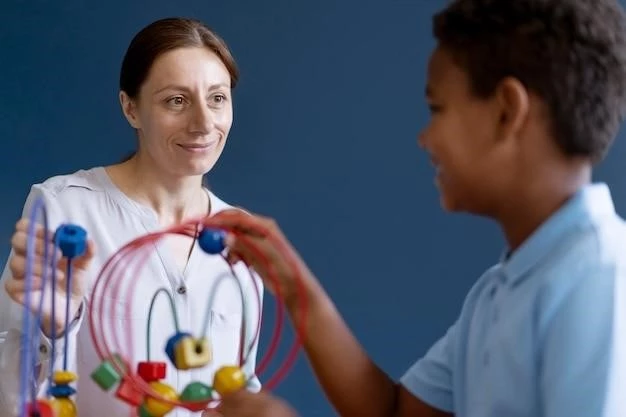Introduction to Hereditary Sensory Neuropathy Type II (HSAN II)
Hereditary Sensory and Autonomic Neuropathy (HSAN) Type II is a rare genetic disease characterized by sensory deficits and neuropathic ulcers. It is an autosomal recessive condition affecting sensory nerve cells.
Definition and Overview
Hereditary Sensory Neuropathy Type II (HSAN II) is a rare autosomal recessive genetic disorder characterized by progressive sensory deficits primarily affecting the lower limbs. It is associated with neuropathic ulcers and can manifest in childhood, impairing the transmission of sensations such as pain, temperature, and touch.
Characteristics of HSAN II
Hereditary Sensory Neuropathy Type II (HSAN II) is a rare genetic disorder primarily affecting sensory nerve cells, impairing sensations like pain, temperature, and touch.
Onset and Progression
Hereditary Sensory Neuropathy Type II (HSAN II) typically manifests in childhood, with sensory deficits affecting pain, temperature, and touch sensations. The onset is often before puberty, with progressive deterioration of sensory function, more severely impacting the lower limbs over time.
Sensory Deficits
Individuals with Hereditary Sensory Neuropathy Type II (HSAN II) experience progressively reduced sensation to pain, temperature, and touch. The condition predominantly affects the lower limbs, leading to severe sensory impairment over time.
Genetic Basis
Hereditary Sensory Neuropathy Type II (HSAN II) is an autosomal recessive genetic disorder primarily affecting sensory nerve cells, leading to impairments in pain, temperature, and touch sensations. Mutations in specific genes, such as HSN2٫ WNK1٫ FAM134B٫ and KIF1A٫ have been identified as underlying causes of this rare condition.
Clinical Presentation of HSAN II
Hereditary Sensory Neuropathy Type II (HSAN II) presents with sensory deficits affecting pain, temperature, and touch sensations, primarily in the lower limbs.
Predominant Symptoms
Individuals with Hereditary Sensory Neuropathy Type II (HSAN II) commonly experience reduced sensation to pain, temperature, and touch, especially manifesting in the lower limbs. This sensory deficit can impact daily activities and quality of life.
Orthopedic Manifestations
Hereditary Sensory Neuropathy Type II (HSAN II) may present with significant orthopedic manifestations, potentially affecting the musculoskeletal system due to sensory deficits. These manifestations can impact mobility and overall function in individuals with HSAN II.
Autonomic Dysfunction
Hereditary Sensory Neuropathy Type II (HSAN II) can lead to autonomic dysfunction, presenting symptoms related to the autonomic nervous system. These dysfunctions may include issues such as gastroesophageal reflux, postural hypotension, and excessive sweating;
Diagnosis of HSAN II
The diagnosis of Hereditary Sensory Neuropathy Type II (HSAN II) involves genetic testing to identify mutations in genes like HSN2, WNK1, FAM134B, and KIF1A. Differential diagnosis may be considered to confirm the condition.
Genetic Testing
Diagnosing Hereditary Sensory Neuropathy Type II (HSAN II) involves genetic testing to identify specific mutations in genes like HSN2, WNK1, FAM134B, and KIF1A. This testing helps confirm the genetic basis of the condition.
Differential Diagnosis
Diagnosing Hereditary Sensory Neuropathy Type II (HSAN II) involves a thorough differential diagnosis to distinguish it from other types of hereditary neuropathies and similar conditions presenting with sensory deficits. This process helps healthcare professionals confirm the specific subtype and genetic basis of the disease.
In managing Hereditary Sensory Neuropathy Type II (HSAN II), treatment focuses on symptomatic relief, multidisciplinary care, and exploring future therapeutic avenues for enhanced management of the condition.
In managing Hereditary Sensory Neuropathy Type II (HSAN II), treatment focuses on symptomatic relief, multidisciplinary care, and exploring future therapeutic avenues for enhanced management of the condition.
Multidisciplinary Care
The management of Hereditary Sensory Neuropathy Type II (HSAN II) involves a multidisciplinary approach, incorporating the expertise of various healthcare professionals, to address the complex needs of individuals with the condition. This comprehensive care plan aims to optimize treatment outcomes and enhance the quality of life for patients living with HSAN II.
Management and Treatment Approaches
In managing Hereditary Sensory Neuropathy Type II (HSAN II), treatment focuses on symptomatic relief, multidisciplinary care, and exploring future therapeutic avenues for enhanced management of the condition.
Hereditary Sensory Neuropathy Type II (HSAN II) may lead to potential long-term complications and challenges in managing the condition. Understanding the prognosis is essential for effective treatment and care.
Long-Term Outlook
Hereditary Sensory Neuropathy Type II (HSAN II) presents challenges in long-term management due to progressive sensory deficits. Understanding the long-term outlook is crucial for healthcare planning and patient care.
Prognosis and Complications of HSAN II
Understanding the long-term outlook and potential complications of Hereditary Sensory Neuropathy Type II (HSAN II) is essential for comprehensive patient care and treatment planning.
Research on Hereditary Sensory Neuropathy Type II (HSAN II) primarily focuses on identifying genetic markers, understanding the molecular basis, and potential therapeutic targets for the condition.
Research on Hereditary Sensory Neuropathy Type II (HSAN II) focuses on identifying genetic markers, understanding the molecular basis, and exploring potential therapeutic targets for the disease.
Research and Genetic Studies on HSAN II
Recent findings in Hereditary Sensory Neuropathy Type II (HSAN II) research focus on identifying genetic markers associated with the condition. Understanding the genetic basis through research contributes to advancements in diagnosing and managing HSAN II.
The rare genetic disorder Hereditary Sensory Neuropathy Type II (HSAN II) can significantly impact a person’s quality of life, particularly due to sensory deficits and potential complications associated with the condition.
Living with Hereditary Sensory Neuropathy Type II (HSAN II) can pose daily challenges due to sensory deficits and potential complications, affecting various aspects of life.

Impact on Quality of Life
Living with Hereditary Sensory Neuropathy Type II (HSAN II) can have profound psychological effects, impacting emotional well-being and quality of life. These effects may stem from the challenges posed by sensory deficits and the potential complications associated with the condition.
Individuals with Hereditary Sensory Neuropathy Type II (HSAN II) can benefit from various support resources, including patient associations and counseling services, to address the unique challenges posed by the condition.
Accessing patient associations and counseling services can provide valuable support for individuals living with Hereditary Sensory Neuropathy Type II (HSAN II), assisting them in coping with the challenges presented by the condition.
Support Resources for Individuals with HSAN II
Access to counseling services can provide vital emotional and psychological support for individuals living with Hereditary Sensory Neuropathy Type II (HSAN II), helping them navigate the challenges associated with the condition and improve their overall well-being.
Efforts to raise awareness about Hereditary Sensory Neuropathy Type II (HSAN II) include Rare Disease Day initiatives and educational campaigns to increase understanding of the condition and support individuals affected by HSAN II.

Awareness and Advocacy Efforts
Raising awareness about Hereditary Sensory Neuropathy Type II (HSAN II) includes initiatives like Rare Disease Day and educational campaigns to support individuals impacted by the condition.
Educational Campaigns
The information you requested showcases the prevalence and characteristics of Hereditary Sensory Neuropathy Type II (HSAN II), emphasizing the sensory deficits, onset, and progression associated with this autosomal recessive genetic disease. Research efforts focus on identifying genetic markers and exploring therapeutic avenues. Orthopedic manifestations and potential complications can significantly impact individuals, underlining the importance of multidisciplinary care and support resources to enhance quality of life for those affected by HSAN II.
